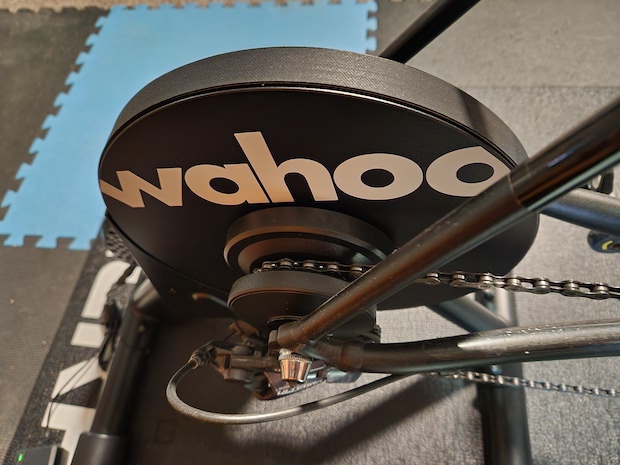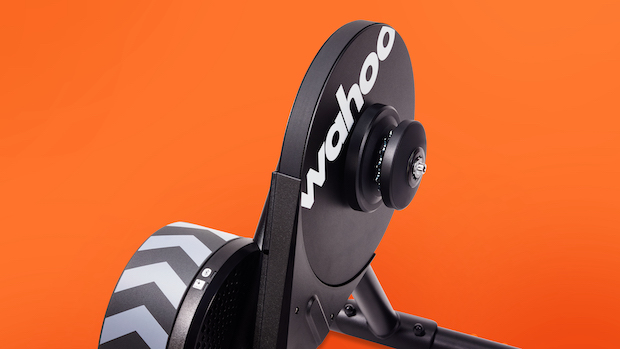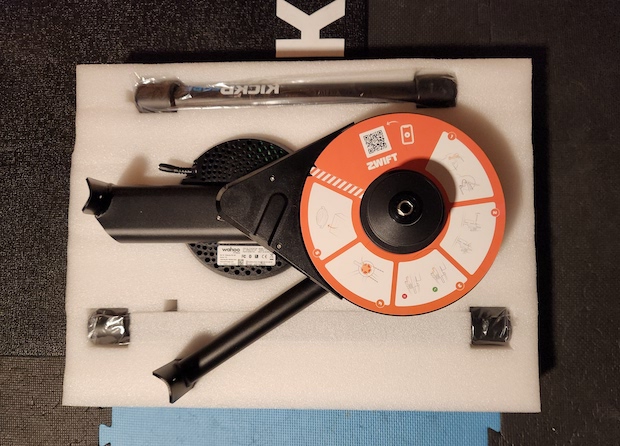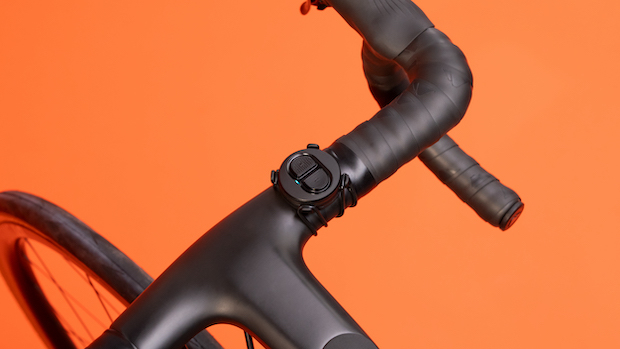Wahoo KICKR CORE Zwift One Launches

Last year, Zwift introduced virtual shifting through their rebranded trainer, the Zwift Hub One. The idea behind the Hub One was to lower the cost and technical barriers to virtual riding on Zwift.
Virtual Shifting in Zwift
Virtual shifting involves the smart trainer changing resistance to approximate 24 gear ratios. The virtual shifting is controlled by a handlebar remote, the Zwift Click, and with a firmware update (rolling out Feb 7 and 8), the Zwift Play Controllers.
Virtual shifting eliminates the need for a cassette on the trainer, replaced with a single speed cog, which can accommodate any drivetrain (8-12 speed) and component group. This change drastically reduces complexity for entry-level consumers and opens up the possibility of a trainer being easily shared across bicycles with different drivetrains.
Virtual shifting is not new. The Wahoo Kickr Smart and Shift Bikes have customizable virtual gears that change the bike’s resistance from the buttons on the levers. These virtual gear changes are made within the hardware of the smart bike.
What is new is bringing virtual shifting to an entry-level trainer and allowing the Zwift game to control the virtual gear changes of the trainer.
Updated KICKR CORE

The Wahoo KICKR CORE has been updated to support virtual shifting, and is now being offered in a Zwift bundle on par with with the Zwift Hub One at the $599.99 pricepoint. Branded the Wahoo KICKR CORE Zwift One, the entry-level trainer comes with the Zwift Hub One, the Zwift Click, and a one-year subscription to Zwift allowing new consumers to use virtual shifting right out of the box.
Current KICKR CORE users can update their trainer’s firmware to enable virtual shifting, but they will need either the Zwift Click or the Zwift Play Controllers to change the virtual gears in Zwift. Also, the trainer doesn’t know if it is equipped with a single speed cog or a cassette, so users can run virtual shifting with their current cassette setup.
Zwift offers a Cog + Click upgrade kit for $79.99 for the Zwift Hub trainer. However, the freehub of this kit is not compatible with the KICKR CORE, so current CORE users will have to (1) wait for Wahoo to offer their version of the Cog kit, (2) disassemble the Zwift Cog to move the single cog and guides over to the CORE freehub, or (3) buy a third-party single speed conversion kit that is compatible with their current setup. Again, that's not necessary, though, because virtual shifting works with a cassette.
The Zwift Play controllers at $99.00 (during the Beta period) may be a better investment, as they will control virtual shifting (by Feb 8) and allow you to steer and brake in the game.
Wahoo & Zwift Moving Forward
Zwift put a great deal of time and resources into lowering the cost and technical barriers to virtual riding on their gaming platform. The $600 price point for a smart trainer including a one-year subscription to Zwift has proven successful for coaxing the entry-level rider indoors to ride on Zwift. The packaging and instructions for assembling the Hub smart trainer made it very easy for the non-technical user without any bike tools. The Hub One and virtual shifting made it even easier for setup and bicycle compatibility. However, Zwift’s foray into smart trainer hardware has proven to be more trouble than it’s worth for the company.
Therefore, with the KICKR CORE update to virtual shifting and pricing on par with the Zwift Hub One, we will see Zwift phase out their smart trainer after selling off the remaining stock and defer to Wahoo for all things hardware. This seems to follow their current trajectories of returning to their original lanes of Zwift focusing on virtual riding software and Wahoo focusing on smart trainers, bikes, and now a treadmill, KICKR RUN.
With the recent layoffs from Zwift that included mostly the hardware team and the Co-CEO resigning, we see this product development as a continued team-up with ZWIFT and WAHOO bringing both brands together not only in the virtual world but in your homes. For us at Slowtwitch, this shows that both companies continue to strengthen their books and bring out the best in one another.
Old Habits
The Wahoo KICKR CORE Zwift One is as easy to setup and ride as the Zwift Hub One. Assembly only requires attaching the two legs and choosing the correct axle adapters. Zwift provides an assist to Wahoo with this process adding their own easy-to-read instructions and video.

I have found the quickest and most reliable way to pair devices in Zwift is through the Zwift Companion App. The Companion App serves as a bluetooth bridge for the KICKR CORE and the Zwift Click. For whatever reason, I get less connection drops through the Companion App compared to connecting directly to my gaming PC.

One habit that will take me some time to break is using my shifter levers to change my gears mechanically instead of the Zwift Click to change my gears virtually. When I make this mistake, nothing terrible happens. One mechanical click in either direction is not enough to derail the chain from the Hub One single speed cog.

Also, the plastic guides are as tall as the teeth of the cog, which reduces the likelihood that an unnecessary mechanical shift will derail the chain. For now, I just have to remind myself to use the Click. However, in the future I think reverting to old shifting habits will be lessened by the Zwift Play controllers updated to virtual shifting. Having the buttons closer to your shifter levers will be helpful for retraining the brain for virtual shifting.
Minimalism
I keep in mind that the KICKR CORE Zwift One is targeted toward entry-level riders with the idea that reducing cost and complexity will lower barriers to participation on Zwift and other virtual riding platforms. However, I can’t help but to wonder what other possibilities virtual shifting opens up.
I’m not alone in owning multiple bikes and reserving the least expensive one for indoor riding. I built up a used, aluminum Allez Sprint with mechanical Ultegra/105 11-speed for riding indoors (and occasionally for airline travel). This bike remains mounted on a Wahoo trainer for most of the year. And when I’m riding it, I wonder why I bother having brakes installed on it. Now with virtual shifting, I’ll be wondering why I even have a drivetrain installed on it. I could get as minimalistic as a crankset and a chain tensioner. Which led me to thinking I could just mount my track bike with the Velobike adapter I already have on hand. Fixed gear with virtual gears? I mean, why not?
All this geekery aside, virtual shifting eliminates the need for a bike that mechanically or electronically shifts gears, and could, in theory, further lower the barriers to participation if all you need is an inexpensive bike with a chain tensioner to ride on Zwift.
I like where this is going.




Start the discussion at forum.slowtwitch.com